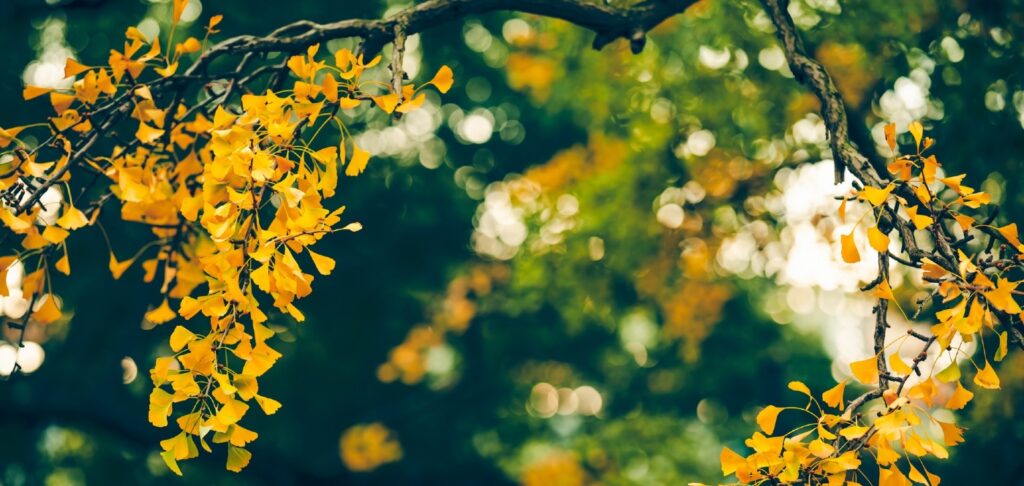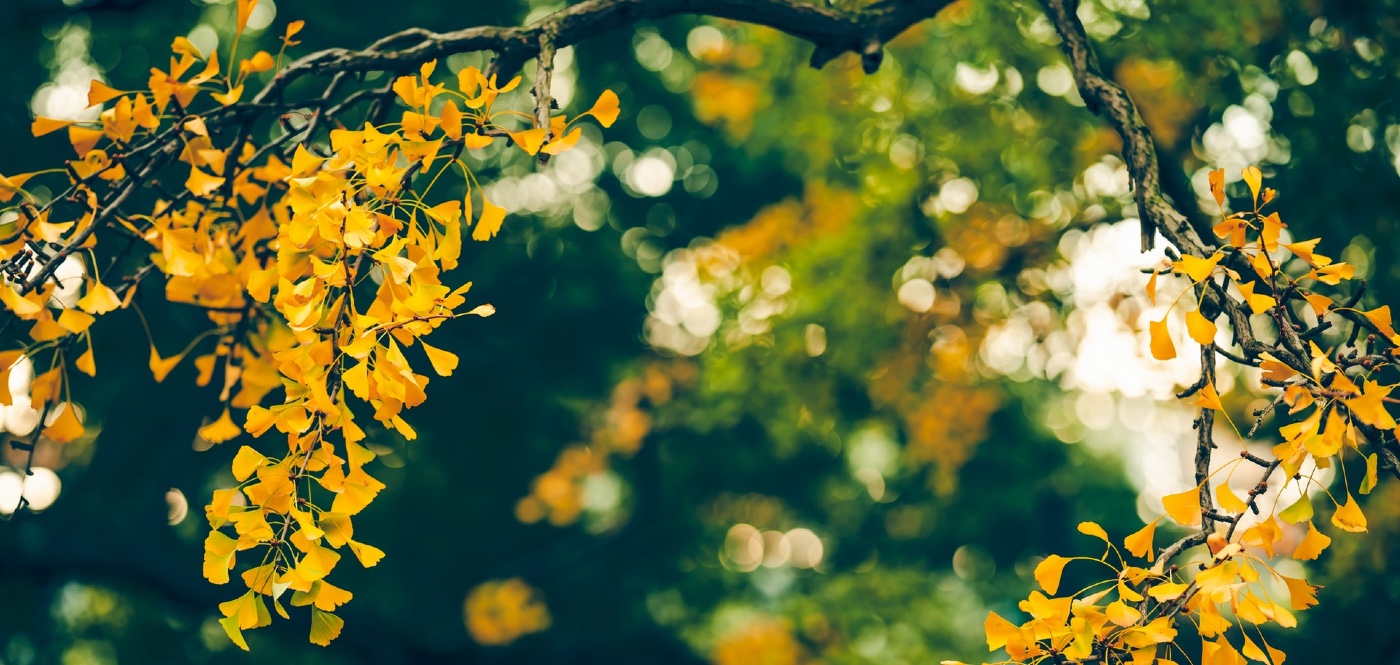Lining the streets of many American city suburbs are living fossils, which unlike many stories of man’s interaction with nature, involves nature as the destroyer, and mankind, the savior.

While some people take ginkgo leaf as a nootropic supplement, few people would imagine it’s the equivalent of eating a horseshoe crab, that is to say it’s an organism that, unlike every other member of its family, made it out of the time before mammals.
Ginkgo Biloba stands alone in its family Ginkgoaceae; the last of its relatives dying out likely during the last ages of the dinosaurs. Understanding of the tree’s heritage suggests it would have gone the way of T-rex without a brush with homo sapien.
The evidence for this comes down to the slow arms race observed in evolution. There are five types of plants which produce seeds on the Earth today. Flowering plants, conifers, cycads, and gnetales are joined by the lonely ginkgo family, which scientists suggest may have contained many different species based on the fossil record, specifically in China.
About 130 million years ago, flowering plants really started stealing the show, developing sweet nectar in their flowers to attract pollinators, and sweet fruit to attract animals for dispersing seeds. Ginkgo on the other hand relied on the wind to blow pollen from male to female trees.
This was hypothesized as being an inconsistent strategy, as ginkgo are sometimes observed to change sex, perhaps a failsafe mechanism to increase the chances of reproduction.
These respective evolutions likely pushed the ginkgo family to the back of the evolutionary bus. By 66 million years ago, according to National Geographic, ginkgo was gone from most of North America and Europe, and by the end of the last Ice Age, clung on only in China.
MORE: For First Time Ever, Scientists Identify How Many Trees to Plant and Where to Plant Them to Stop Climate Crisis
It’s theorized that it was the Paleolithic residents of China who, removing the reeking outer layer of the ginkgo nut in search of a food source resembling a pistachio, began eating and replanting them to harvest the nuts.
Ginkgo is now one of the most common trees in cities along the U.S. East Coast after botanists brought the tree back from China in the 17th century. Good for almost nothing, besides offering a bounty of beautiful yellow leaves in fall when they all change in a very short time, it nevertheless is resistant to pollution and can thrive under concrete.
Peter Crane, author of the book Ginkgo and one of the world’s foremost Ginkgo experts, described the human intervention as a “rescue from natural oblivion” and “a great evolutionary [and cultural] story.”
RELATED: Rooftop Panels of Tiny Plants Can Cleanse Polluted Air at 100 Times the Rate of a Single Tree
The IUCN still recognizes the tree as Endangered in the Red List–the world’s largest threatened species catalogue, largely due to a lack of ginkgo trees surviving in the wild in undomesticated forms.
However a 2012 study confirmed there are trees surviving in southeast China that may represent the only truly wild population left.
The story shows that while humans often receive blame for sending plants and animals into oblivion, we also have a reputation for saving them too.
PLANT Some Good News for Your Friends–Share This Story on Social Media…




















